"Short but sweet" is a good way to describe 2001's Max Payne, as well as its newly released sequel, now available for the Xbox just weeks after the PC version debuted. As far as the quality of the translation is concerned, this new Xbox version features the same content as the PC release but loses some of the graphical frills that can be found in its PC counterpart (when running on a high-end PC, anyway). As for the game itself, as long as you go into it without expecting a dramatically different--or longer--experience than the original, Max Payne 2 won't disappoint. On its own merits, it's a stunning shooter that's got a bit too much plot and is over too soon, though it's still incredibly intense and, by all means, worth experiencing.
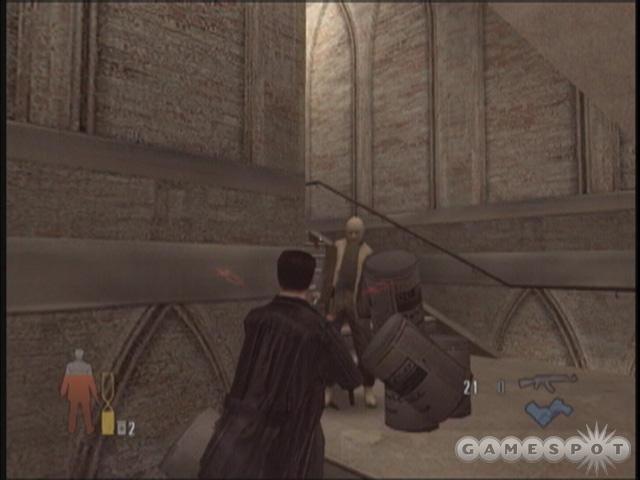
Max Payne 2 is a direct sequel to the original and picks up after the events of that game. Max, now a detective and wearier than ever of the world, once again has his hands full as he finds himself hopelessly attached to the lovely Mona Sax, a murder suspect and part of a bigger plot that ties in to Max's own dark past. There are tons of references and parallels to the original story. Fans will undoubtedly be pleased by some of the nudging and winking, though someone starting off with Max Payne 2 would probably feel rather left out, despite the presence of an optional cutscene that summarizes what happened leading up to Max Payne 2. Still, this is a surprisingly complex narrative for a game, irrespective of the genre.
The storyline unfolds in much the same fashion as the original. It uses some very slick, graphic novel-style storyboards--complete with melodramatic dialogue straight out of a pulp detective novel--and good voice-over to go with it. These graphic novel sequences are unmistakably similar to those of the first game, though they are, in some cases, even more artistic this time around. Max Payne 2 certainly isn't lacking in its presentation. All of the game's between-level loading screens and graphic novel sequences are impressive-looking and are often very cool. The plot itself features a number of twists but is rather convoluted the first go-round. Play through the game a second time (perhaps on the higher difficulty setting that's unlocked after you finish it the first time) and you'll likely get a much clearer sense of what's happening.
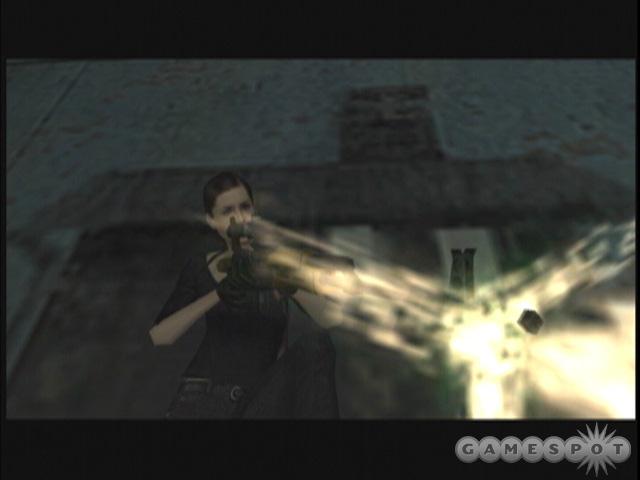
There's no confusion when the bullets start flying: Max can point and shoot, easily, using default controls identical to those found in other first-person or third-person Xbox shooters. If there's any issue with the controls, it's that Max turns quite slowly. By clicking down on the left thumbstick, however, you can make him turn much more quickly. You'll probably end up doing this all the time, since there's no way to adjust the speed at which Max normally turns. Actually, were it not for Max's unique ability to slow down time, he'd be a pretty boring character to play. In the first game, Max's bullet time ability was used primarily while executing shootdodges. Max would launch himself forward, sideways, or backward while blazing away at his enemies. Bullet time slowed Max down--same as the bad guys--but he'd retain the ability to aim in real time, thus allowing him to draw a bead on multiple enemies while in midjump. Bullet time is different now and, for better or worse, the shootdodge has been de-emphasized as the technique of choice. It's still an option--and a good one. In fact, Max can now optionally stay prone, after landing from a shootdodge, for as long as he continues to fire his selected weapon (till its clip runs out of ammo, anyway). Recovery from shootdodging is a little slower than before, but the main reason it's less essential than it used to be is because now Max is so much more effective on his feet during bullet time.
Unlike the first game, Max does not slow to a crawl during bullet time. Now, as he kills his enemies, his bullet time meter not only regenerates, but it turns from white to yellow. As this happens, time moves even slower while Max moves even faster. After you've killed several enemies in succession, and your meter is yellow, you'll be moving pretty much at full speed while in bullet time. Your foes will be practically helpless to stop you. Bullet time was never intended to be a realistic feature, though it was loosely justified as Max's heightened state of awareness, brought on by the intensity of a life-and-death situation. This new bullet time can't be explained away quite as easily, and it's much more akin to a superhero power. Or maybe it's the power of love? In any case, this new bullet time makes Max Payne 2, to some extent, easier and less tactical than the first game. Whereas the old Max Payne needed to shootdodge from cover to cover, playing it safe, the new Max Payne's best tactic is to run straight at his enemies with bullet time toggled on. This may seem like a counterintuitive approach for a man who's heavily outgunned, but it lends itself to some pretty incredible close-quarters shoot-outs and gives Max Payne 2 a different feel from its predecessor.
The souped-up bullet time of Max Payne 2 enables you to take on much larger groups of foes than you could in the first game. The body count here is quite high, particularly in some of the later sequences, which have Max taking on small armies by himself or, sometimes, with a helping hand or two. One of the touted new features of Max Payne 2 is that Max can sometimes fight alongside other characters. This works as expected. The supporting characters follow Max's lead and lend a helping hand, though their assistance isn't all that valuable. Your options in working with these characters are limited to telling them to stay put or to follow you, which is fine, since having to issue complex orders to a squad would just slow things down in a game like Max Payne 2.
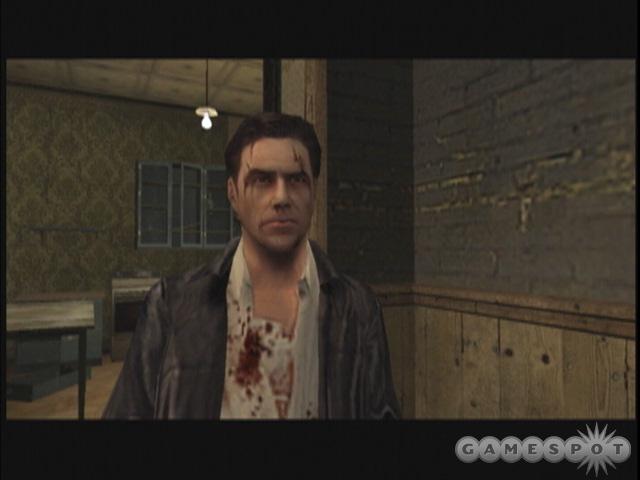
Along with the changes to bullet time and the presence of the occasional friendly character, the third main difference in the gameplay of Max Payne 2 versus its predecessor is in the new game's use of physics. The Havok physics engine was put to noticeable, extensive use in this game, as objects from human bodies to cardboard boxes to tires to paint cans all have fairly realistic mass and can be flung and bounced around forcefully--even when struck by a double-barreled shotgun blast. Thanks to rag doll physics (which have been used in other action games, like the Hitman series and Rainbow Six 3), bad guys in Max Payne 2 routinely get sent flying--like the lifeless heaps that they are--when shot by any high-caliber weapon or when caught in an explosion.
Sometimes the results of this look awkward, but much more often, the results are dynamic and impressive--especially when seen in slow motion. Many of Max Payne 2's shoot-outs take place in seemingly mundane locations, like warehouses, but when you consider that most every object lining the shelves--and even the shelves themselves--can be blown around or apart during a firefight, you'll begin to realize that these settings are actually ideal for a game that's all about shooting. Just as with the rag doll physics for the characters, the physics for the game's objects aren't quite perfect. You can bump a box around by running into it, or you can shoot it and send it flying. However, the box itself won't break apart or anything. Some other aspects of Max Payne 2, such as its relatively frequent cutscenes that use the game's 3D engine, can also seem rather awkward. This is mainly because most of the game's visuals are so convincing that the few unconvincing portions tend to stick out. Also, those who've played the PC version of Max Payne 2 on a relatively high-end PC would be quick to notice some of the corners that were cut in the Xbox port. Some details are missing here, like reflective surfaces, and weapon effects and explosions are toned down. None of this matters when you're in the middle of a firefight, though.
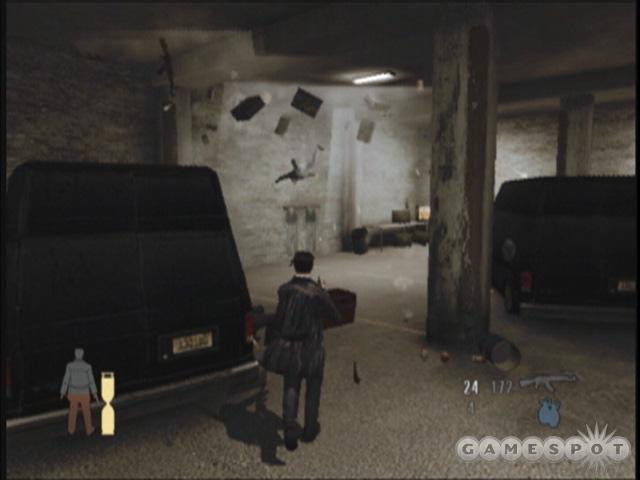
Max's arsenal of weapons hasn't changed much from the first game. He largely uses the same types of pistols, submachine guns, assault rifles, and shotguns that he used extensively in the past. The main addition here is the MP5 submachine gun, a mainstay in any shooter with real-world weapons. An AK-47 and a Dragunov sniper rifle are also available, but, by and large, the weapons in Max Payne 2 are just what you'd expect if you played the first game. Max now has the ability to use any of his weapons as a bludgeon, though this is a throwaway feature that's useless and lousy-looking. This is too bad, since Max seems like a guy who'd be more than willing to use the butt of his gun if some scumbag wasn't worth the lead. He's still got access to grenades and Molotov cocktails, and one nice change from the first Max Payne is that he can have these equipped at the same time as his primary weapon. Much like in Halo, a secondary fire button lets you chuck a bomb at the bad guys even when you're firing away. The flame and explosion effects unfortunately don't look very good in the Xbox port of Max Payne 2, but the way the blasts tend to send enemies flying is still as satisfying as ever.
As in the first Max Payne, the sequel features a self-adjusting difficulty level, which tweaks the enemy AI as well as the quantity of life-restoring painkillers you'll find in a level. Enemies are pretty smart, in general. They use cover and mostly behave in a plausible manner--for guys who are trying to shoot you to death. In a nice touch, some of them will call you a coward if you run for cover, and they'll even toss a grenade your way to keep you moving. If you die a lot, you'll run across more pills to keep you alive, and your enemies might be a little slower on the draw. This works reasonably well, insofar as no part of Max Payne 2 is liable to have you stuck for very long. If anything, the game is a little too easy, especially since the Xbox version includes an "auto-aim" feature that is toggled on by default, which makes your aiming reticle automatically snap to any nearby enemies. Of further note, and as in the first game, the sequel features a few sequences that take place in Max's mind, as well as in some other surprising locations. Many of these sequences, however, are analogous to those found in the original. For instance, there are a few parts that require some careful maneuvering, lest you plummet to your death. While these tightrope acts really aren't the best parts of Max Payne 2, they do break up the pacing a little and aren't very hard.
The storyline breaks up the pacing, too. There's a lot of story throughout the game, and, though it may be slick, it's time you spend passively rather than time you spend actively by shooting thugs in slow motion. All the game's cutscenes may be skipped, though there's a brief loading time when you skip them. In any case, it's not like the game is about wall-to-wall action, unless that's what you want it to be. You'll probably find yourself pausing to watch some of the goofy television shows playing in the background or paying attention to some other peripheral details, of which there are many. One of the game's mock TV shows is particularly good. Dick Justice is a '70s-style cop drama that happens to be a rather scathing parody of the original Max Payne storyline. These and some other bits add a refreshing bit of absurd levity to the proceedings, thus proving that being clever is working out great for the developers at Remedy Entertainment. In fact, it bears mentioning that Max Payne 2 is indeed a very cinematic game: Don't let someone spoil the plot for you if you can help it! The story and some of the gameplay sequences are that much more effective if you experience them on your own terms and at your own pace.
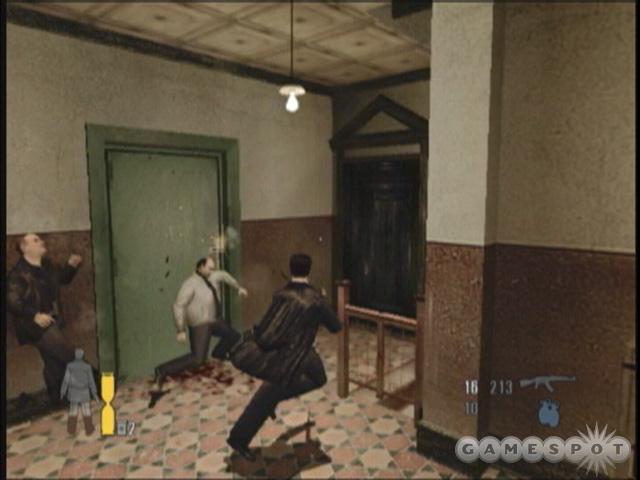
Even if you stop and smell all the roses, Max Payne 2 is short. It's shorter than the first game, which lasted about 10 hours from beginning to end. That may sound weak, but the core action is dynamic and enjoyable enough, and the story is twisted enough to where it's definitely worth playing through the game more than once. Two higher difficulty settings are available, which become unlocked after you finish the game at the previous difficulty setting. As an added challenge, the highest setting limits the number of times you can save in a level (and you can save your progress instantly at any time). Also, once you've finished the game, you can go back and replay any of the individual levels that compose the storyline. The first game's "New York minute" mode is back, but now it's just a simple time trial. You no longer lose if you aren't fast enough in a level, though, implicitly, you're trying to get through it as quickly as possible.
A new mode, called "dead man walking," has been added, and, in it, you're trapped in any number of the game's more spread-out environments as enemies start spawning in. It's a question of how long you can last until they finally gun you down, and it can be quite fun. Since Max Payne 2 is, nevertheless, a short, single-player-only game, you could certainly get by on renting it for a weekend rather than keeping it for posterity.
Like its predecessor, Max Payne 2 looks impressive, for the most part. Max's character model--his face, anyway--looks completely different than it did in the first game, though the character models aren't really the strong point of the game's presentation. On the PC, it's the razor-sharp, photorealistic texture maps, the excellent special effects and animation, and the incredibly detailed environments that are the stars--though none of these things are as remarkable on the Xbox, as they've lost some of their luster in the translation. The bullet time effects still look great, though. Bullet time now causes the game world to go into a sepia tone, and you can still make out individual bullets or shotgun pellets as they whiz through the air when time's slowed down. There's a fair bit of blood during the firefights (though still no visible damage to the character models) and some debris from background objects that are struck. The game runs smoothly on the Xbox, and, all in all, Max Payne 2 looks great. It's certainly a lot better than what you'd get on a PC that just meets the original version's minimum requirements. The rare clipping issue or other small blemish in the look of the game is outweighed by the overall style and artistry of the game's visuals. And, despite some of the predictably mundane settings of a game set in the real world, you can expect to see some very unusual and interesting places and characters during the game.
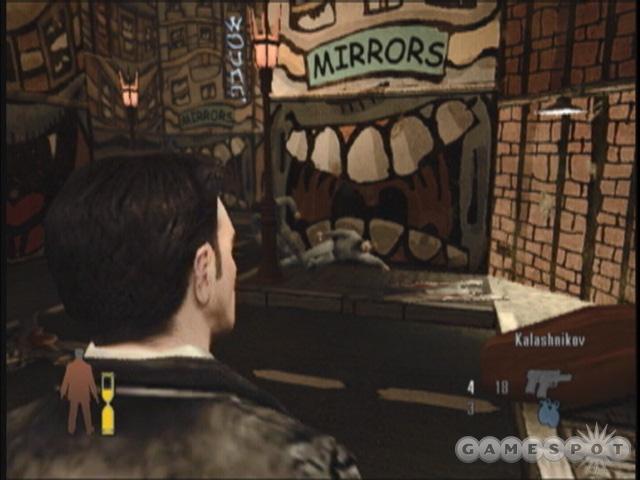
Max Payne 2 sounds a lot like its predecessor. The sound of bullet time, which was so remarkable in the first game, is largely the same here. The rush of air and the sound of Max's heart pounding in his chest are the telltale signs of the effect. Then all the gunfire becomes muted and distant. The weapon effects are very loud and clear. The game's soundtrack is limited but outstanding. The title theme for the game, a beautiful and melancholy cello solo, is downright moving. You won't be hearing much music during most of the action scenes, though. What you will hear plenty of is Max Payne's internal monologue. He may look different, but thanks to the voice of James McCaffrey and a script by Sam Lake--both of whom reprise their roles from the original project--Max sounds very much the same: He's as brooding and monotone as ever. Some criticized Max Payne for its ham-fisted storyline and performances, but, by now, these elements seem perfectly intentional. The game's attempts at being melodramatic are, by all means, successful, and the over-the-top dialogue is the perfect counterpart to the over-the-top action.
That's a style of action that no game since Max Payne has managed to deliver with nearly the same level of greatness--though a number of games have tried. As such, the fact that Max Payne 2 essentially provides more of what made the first game so outstanding--but with a fresh, new coat of paint and an intriguing, new storyline--makes it a must for anyone who liked the original. Like its predecessor, and in some ways even more so, Max Payne 2 is a remarkable production, and what it lacks in length or volume it more than makes up for in quality and density.



